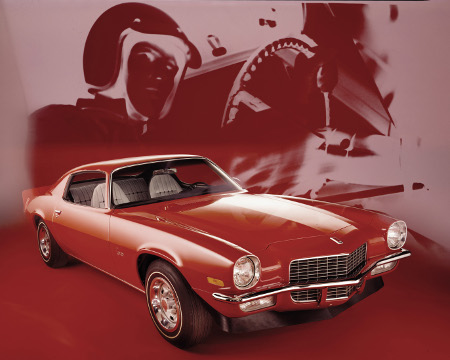By Robert Tate, Automotive Historian
Images courtesy of the National Automotive History Collection
Posted: 04.20.2016
 1967 Camaro
1967 Camaro
On Monday, Sept. 12, 1966, General Motors had introduced a car that would help to change the direction of their styling trend for all product lines.
The late Pete Estes, who was general manager for Chevrolet at the time said “The introduction of the Camaro as Chevrolet's sixth line of cars matches the American public’s growing preference for individualized transportation.”
The Camaro models for 1967 offered an 108-inch wheelbase and a comfortable seating arrangement for four passengers and great roominess with a sports car look and feel. The new Camaro styling had offered a fresh new look with a long hood and short deck. I always thought that the concealed headlights and the front grille had introduced the models with a new and different fresh look for Chevrolet products for 1967.
The Camaro models for 1967 were very well received by the public and many consumers had thoroughly enjoyed their great styling features. The year 1967 was also a good year for volume and good profits for General Motors. The 1967 Camaro Z28, had marked the beginning of a legend, only 602 models were made.
Camaro was also tapped as the official Pace car for the 1967 running of the Indianapolis 500 which drew even more attention to the product line and to GM.
 1969 Camaro
1969 Camaro
The 1968 and 1969 Camaro models would continue to be great sales leaders in the industry and profits would continue to grow. The 1969 Camaro models had a new body with a slimmer look for 1969. The all new front end designed with a new V shaped grille along with the large size parking lights beneath the restyled bumper gave it a rally light appearance; that along with the optional bumper which matched the color of the body made for a great combination of design and function.
The new rear end design included an introduction of triple horizontal taillight units for a greater looking appearance. Some automotive enthusiasts over the years have referred to the 1969 Camaro models as being one of the best looking Camaro designs in Camaro’s history. The Rally Sport options included a special black grille with concealed headlights. The driver could also customize his or her Camaro from a wide variety of options including several exterior striping combinations. The Camaro was also the Indy Pace Car for 1969. The models had an all-white exterior with an orange interior. A total of 3,675 models were produced and manufactured.
 1972 Camaro
1972 Camaro
In 1970, wholesale changes were made to the styling for the Camaro models. Bill Mitchell and his great design team had put together a great looking car for 1970. The models offered a long, sleek hood; a new front end design, along with high intensity headlights, wider doors, a swept back roof and a great rear-end styling, along with flush-mounted door handles were just a few featured options that were available on the 1970 Camaro models.
The 1970 Camaro models were in dealer show rooms starting on Feb. 26, 1970. During the 1970s, Camaro had continued to create great sales volume within the auto industry. In 1976, Camaro had offered the Rally Sport coupe which was a great looking car. They were called the second generation models and the public loved the refurbished designs.
 1976 Camaro
1976 Camaro
During that era, the Camaro stood strong as one of America’s better looking cars. The price was surprisingly attractive for consumers and the strato design bucket front seats marked a unique and successful design element.
In 1982, Camaro would change again with a new look in design and appearance for the consumer market; this time the model would be considerate the third generation. The Chevrolet 1982 Z28 models were also great looking designs. They were the total performance Camaro models and once again many consumers really liked and enjoyed the aerodynamic efficiency.
The models offered a sloping nose over a swept-back windshield to the subtle spoiler on the trailing edge design of a glass rear hatch (I love this design). The 1982 Camaro had been a wind tunnel tuned design project from the beginning and was tested for minimum air drag. The 1982 Camaro also became the Indy 500 pace car which was driven by Jim Rathmann, who was the 1960 Indy 500 winner.
 1983 Camaro
1983 Camaro
In 2008, automotive history was made again when General Motors brought back the legendary design of the Camaro. Ever since the crowds and fans had cheered at the North American International Auto Show in Detroit in 2006, the Camaro has made a comeback to the auto industry in great style and performance.

A special thanks to Robert Tate, Automotive Historian and Researcher, for contributing this story to the MotorCities Story of the Week Program.
For further information on photos please visit http://www.detroitpubliclibrary.org/ or email This email address is being protected from spambots. You need JavaScript enabled to view it.. Please do not republish the story and/or photographs without permission of MotorCities National Heritage Area.



